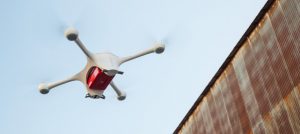The news came, like so much else these days, over Twitter. In a series of tweets Wednesday, President Trump said his administration will revoke California’s ability to set its own vehicle emission standards. The state’s leaders have promised resistance, and the fighting will likely take the form of a lengthy court battle. The result (especially if Trump wins a second term) could determine how emissions are regulated across the country.
That’s because for more than 50 years, California has led efforts in the US—and much of the world—to curb the damage that cars and other vehicles inflict on human and planetary health. Suffering from eye-stinging, lung-burning smog in the years after World War II, state officials focused on what can and can’t come out of a car’s tailpipe. Starting in 1961, new cars had to use positive crankcase ventilation, which limited emissions by controlling how air moves through the engine. Three years later, the state certified the first emissions standards. When Congress amended the Clean Air Act in 1967, a legislative compromise gave California the right to keep setting its own rules (provided they were at least as strict as their federal counterparts), given its early work in the area and its particularly nasty pollution problems.
And the Golden State hasn’t, well, let off the gas. “Every step of the way, California adopted a more aggressive required standard,” says Dan Sperling, the founding director of the Institute of Transportation Studies at the University of California Davis, who sits on the California Air Resources Board.
Stay in the know with our Transportation newsletter. Sign up here!
California cranked up its efforts in 1975, setting newly strict emission standards for light-duty cars. Automakers who wanted to comply—and sell cars in the country’s biggest market—started equipping virtually all their vehicles with catalytic converters, which remove smog-forming hydrocarbons from exhaust gas. That in turn required the phaseout of leaded gasoline, as lead reduced the devices’ effectiveness. The EPA required gas stations to start offering unleaded fuel and made automakers use narrower tank inlets, so only the slender nozzles pumping the clean(ish) stuff could be used. By 1992, leaded gasoline, which contributes to all sorts of health problems, was no longer available in the US.
In 1977 an amendment to the Clean Air Act allowed other states to adopt California’s rules. None did so right away, but today, 13 do so; together with California, they represent one-third of US car sales. Those pioneering rules, Sperling says, also became models for countries in Europe and Asia, including Japan and China, looking to get a handle on car-caused pollution.
In 1990 the state tightened its standards again and added a new component: Its Low-Emission Vehicle program required that automakers sell some zero-emission vehicles, as in battery and fuel-cell electric cars. That program pushed General Motors to develop the EV1, which soon ended up in a junkyard but prepared the automaker to roll out the hybrid Chevy Volt in 2011 and the fully electric Chevy Bolt in 2016. The program also rewarded hybrids, which now sell by the millions.
In 1999, during a stretch where the EPA let national standards stagnate, California added a rule addressing pollution caused by fuel evaporating from gas tanks in hot weather, pushing automakers to redesign their fuel tanks. And in 1998, it expanded its rules to include the hulking minivans and SUVs Americans had come to love, and strengthened the rule governing nitrogen oxide emissions, which would ultimately land Volkswagen in a heap of trouble.
After the turn of the millennium, California’s leaders turned their attention from smog—largely gone from the state’s air—to climate change. The 2004 “Pavley Requirement” (named for the legislator who pushed it) was the first rule that demanded automakers consider not just conventional air pollutants but also greenhouse gases. It was also the first time the federal government, led by George W. Bush, moved to rein in the Golden State. The EPA rejected California’s new rules, sparking a legal fight that was defused when a Democrat moved into the White House in 2009.
Under Barack Obama, the EPA, the auto industry (cowed by its near collapse and government bailout in 2009), and the California Air Resources Board agreed on a new set of national standards that would gradually ratchet up miles per gallon standards and reduce allowable emissions through 2025. It was the first time in decades that California wasn’t pulling ahead of the nation.
From catalytic converters and unleaded fuel to hybrid and electric cars, California has been a major driver of innovation in the auto industry. “It’s pretty profound,” says Don Anair, who oversees clean-vehicle research at the Union of Concerned Scientists. “California has pushed the envelope before the federal government was ready to act.” Just this July, in an end run around the federal government, the state struck a deal with Ford, Volkswagen, Honda, and BMW, in which the automakers agreed to meet relatively strict fuel economy standards by 2026.
But with Trump fixing to roll back federal standards, California has turned its plowshare back into a sword, ready to resume the vanguard in a fight it’s been leading for decades.
More Great WIRED Stories
- WIRED’s 13 must-read books for fall
- New clues show how Russia’s grid hackers aimed for physical destruction
- The unbuilt streets of California’s ghost metropolis
- The biggest iPhone news is a tiny new chip inside it
- One scientist’s quest to bring DNA sequencing to every sick kid
- 👁 How do machines learn? Plus, read the latest news on artificial intelligence
- 🎧 Things not sounding right? Check out our favorite wireless headphones, soundbars, and Bluetooth speakers



